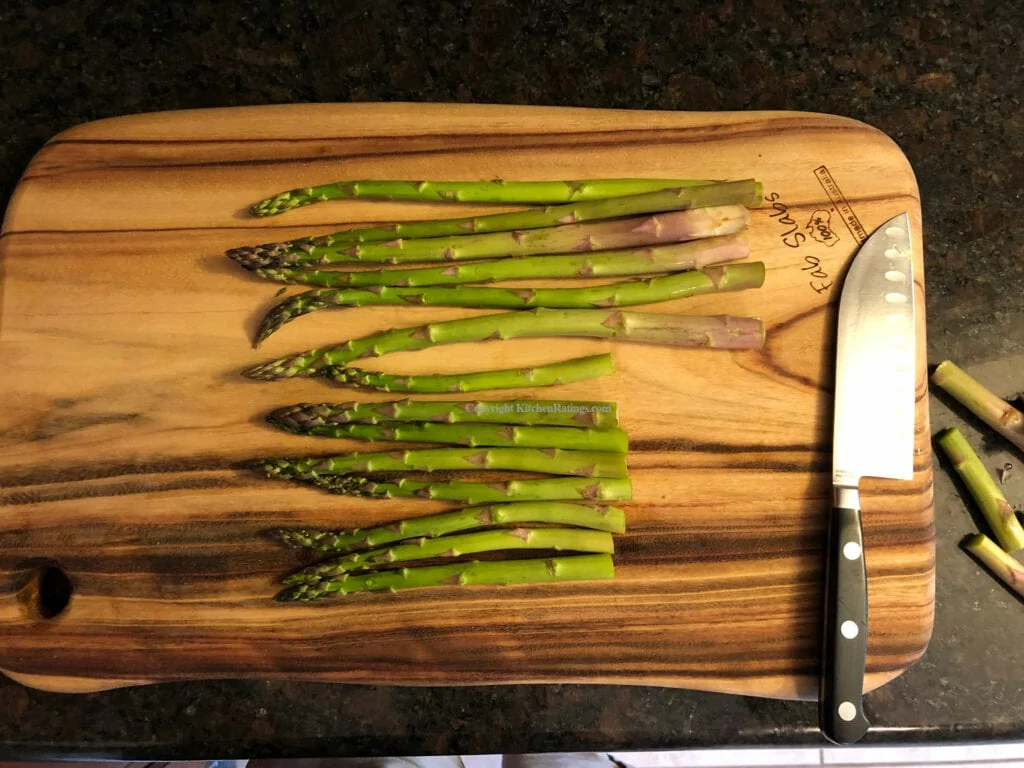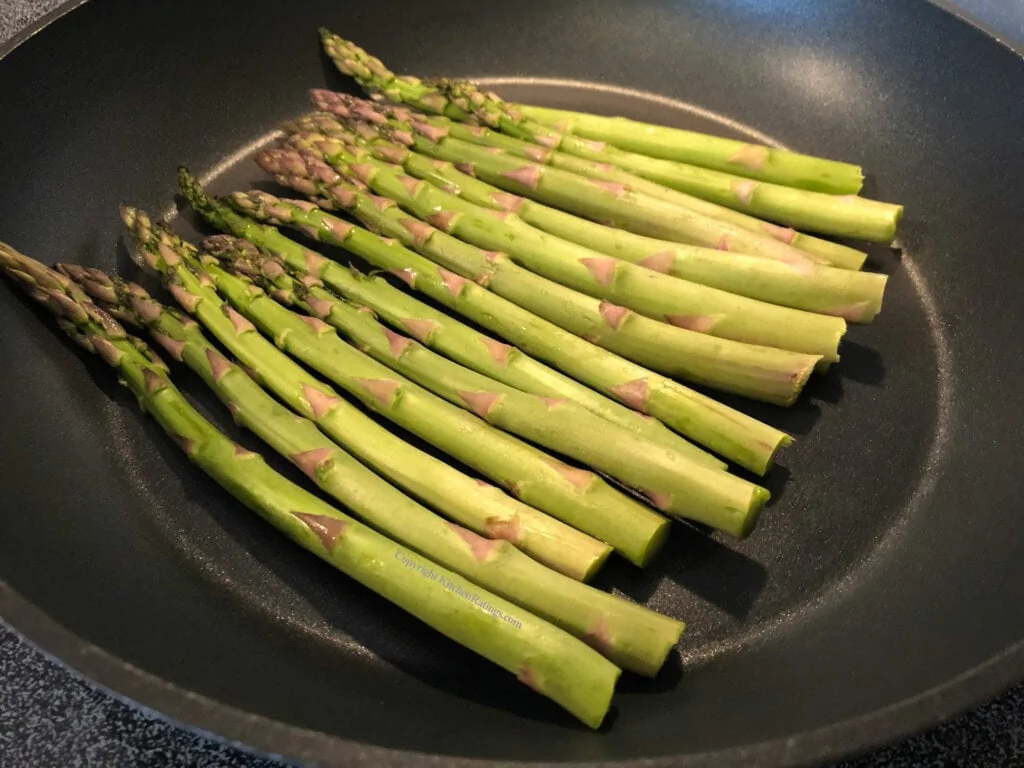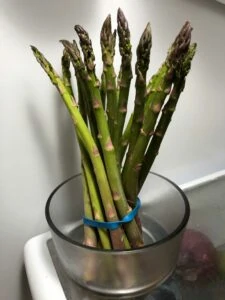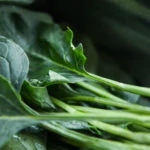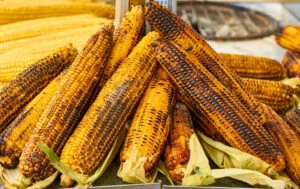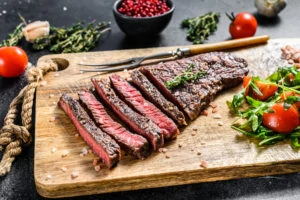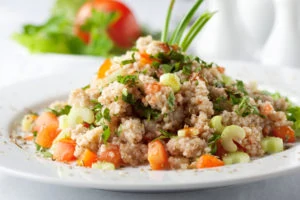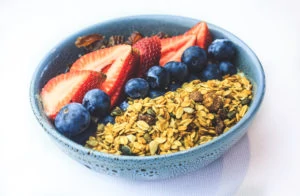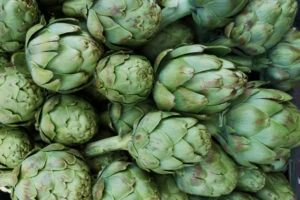Are you new to cooking asparagus? Or maybe you’re tired of always cooking it the same way? Asparagus is a tasty and versatile spring vegetable that can be prepared in a myriad of ways. Easily cooked with a few seasonings or a rich sauce, it is a welcome addition to almost any meal. These recipes are quick and easy ways to add this healthy vegetable to your plate.
If you are out of time and just want a simple recipe without reading more, here is how to cook Asparagus: Cut the bottom of the spears off to remove the hard part of the asparagus. Rinse, dry, then drop the spears into a frying pan on medium heat. Add a little olive oil and salt to taste and cook for 7-10 minutes, stirring occasionally, until browned. That’s all there is to it. Read on for more info and other ways to prepare this excellent side dish.
Selecting Quality Asparagus
What should you look for when purchasing asparagus? After all, the state the asparagus is in when you first get it will affect its flavor and the result of the recipes you try with it. Paying attention to certain characteristics ensures you’re buying a fresh, quality bunch of this vegetable.
Step 1: It Stands Up Tall
Fresh asparagus stands straight from top to bottom. Avoid wilted tips or stalks. It should be firm to the touch, almost to the point where if you were to try and bend it, it would snap in two.
Step 2: It Has a Rich Color
Asparagus that’s lost its freshness will also start to lose its color. Keep an eye out for that vibrant green.
Step 3: Its Tips are Firmly Closed
Good quality asparagus will have its soft tips closed.
Preparing Asparagus
Now that you’ve bought some good quality asparagus, what should you do with it before it’s ready to be used in a recipe?
Step 1: Wash It
Before cooking, make sure your asparagus is washed. Like all fresh fruits and vegetables you buy, you should thoroughly rinse off asparagus in cool water. This gets rids of any trace amounts of dirt and prevents you from catching an illness that someone who handled the asparagus before you might have had.
Step 2: Dry It
Unless you’re steaming or boiling your asparagus, use a towel to dry the stalks after washing them.
Step 3: Trim It
Next, cut off the white bottom of each stalk. This part is the most fibrous, giving it a woody-like texture, and doesn’t taste as good as the rest of the plant. Depending on how thick and fibrous the stalk is (and your personal preferences), you decide how far up to cut. You shouldn’t need to use a vegetable peeler here, and honestly you can just snap the ends off. If the Asparagus is fresh, it should snap easily. If the stalks are extra thick or if you don’t want jagged ends, use a knife and cutting board to create clean cuts above the woody part.
Tip: If you want more tender asparagus, buy asparagus with thinner stalks.
Now you’re ready to cook your asparagus!
Ingredients
The ingredients for all of these methods of preparing Asparagus are basically the same:
- 12 Asparagus spears (about 6-12 spears per person, depending on asparagus thickness)
- 1/2 teaspoon Salt
- 1/8 teaspoon Black pepper
- Olive Oil (or butter)
How to Make Oven Roasted Asparagus
Oven roasted asparagus may be the easiest method of cooking asparagus. It’s quick and doesn’t require a lot of time over a hot stove or a grill.
Step 1: Preheat Your Oven
Set your oven to 400 degrees Fahrenheit (200 C).
Step 2: Toss Your Asparagus Stalks in Olive Oil
You don’t need very much olive oil. Around 1-2 tablespoons per pound of asparagus should be plenty. As long as each stalk is lightly coated it will work, no need to waste the oil.
Step 3: Place on a Baking Sheet and Season with Salt and Pepper to Taste
Spread the asparagus in an even layer on the baking sheet so all the stalks will take the same amount of time to cook.
Step 4: Roast until Tender
Put the pan in the oven and cook for around 10-20 minutes.
Tip: You can shake them around on the sheet halfway through cooking time so they brown more evenly.
How to Prepare Steamed Asparagus
Steaming keeps the asparagus soft and tender and is a perfect cooking method when adding a richer flavor such as a Hollandaise sauce when serving. You will need a pot and a steaming basket (something you can put the asparagus in that has holes the steam can get into).
Step 1: Add Water to Pot
Add an inch or two of water to the bottom of a pot that can accommodate your steaming basket.
Step 2: Place Asparagus in Steaming Basket
Place the asparagus in the steaming basket before placing the basket in the pot. Don’t let the basket touch the water in the pot. Cover with a lid.
Step 3: Cook on Medium-High to High Heat
You’ll notice the water start to boil and steam rise up from it. Continue cooking until the spears are bright green. Use a fork occasionally to check their tenderness. It usually takes 5 to 10 minutes for them to finish cooking, depending on how thick the asparagus stalks are.
Tip: If you’re not going to eat them immediately, plunge the asparagus into ice water to prevent it from overcooking.
Step 5: Season with Salt and Pepper or Add a Sauce of Your Choosing
When it comes to seasoning, you can choose the simple salt and pepper, or you can get creative with your personal flavoring preferences. Many sauces and seasonings go well with asparagus.
How to Sauté Asparagus
Another easy and quick way to prepare asparagus is to sauté it on the stove.
Step 1: Heat a Skillet or Wok to Medium Heat
Medium-high heat is around 375 degrees Fahrenheit.
Step 2: Add Olive Oil or a Knob of Butter
Pour a thin layer of olive oil or add a knob (1-2 tablespoons) of butter to the pan.
Note: if your asparagus is still wet, you can toss it in the pan before adding the oil or butter so it can dry out more quickly.
Step 3: Add Asparagus
Add the asparagus as full spears or chopped pieces. Caution: If there is any water on the asparagus when you add it to a hot pan with oil or butter, it will splatter!
Step 4: Add Salt and Pepper to Taste
If you want, you can decide not to add salt or pepper. Remember you can also try out other seasonings instead if you’re feeling adventurous.
Step 5: Stir Frequently until Tender and Lightly Browned (5-7 Minutes)
During this step you can either use a spatula to stir the asparagus while it’s cooking, or you can shake the skillet by the handle to move the asparagus around.
Step 6: Add a Squeeze of Lemon Juice if Desired
Lemon juice will add a nice zest to the flavor.
Tip: Sautéing asparagus alone is quite tasty, but it can also be cooked with other veggies together to make a great stir-fry dish.
Preparing Grilled Asparagus
Already cooking part of your meal on the grill? Why not add some tasty asparagus to the mix? Alternatively, you could grill them with a grill pan on the stove for that seared flavor, especially if your stalks are small and might fall through the grate on the regular grill.
Step 1: Heat Your Grill (or Grill Pan) to Medium-High Heat
Make sure you don’t turn the heat up too high. You don’t want to overcook or burn the asparagus.
Step 2: Toss Asparagus Spears in Olive Oil, Salt, and Pepper
Add asparagus, 1-2 tablespoons of olive oil, and your preference of salt and pepper to a bowl. Toss or mix the ingredients until the asparagus is evenly coated.
Step 3: Place Asparagus on Grill
While grilling the spears, occasionally turn them over so they cook evenly.
Step 4: Grill for 3-4 Minutes
The asparagus will be tender when done.
Tip: For an added boost of citrus flavor, grill a couple of lemon halves with the asparagus and serve together.
Toppings and Sauces
You can serve your asparagus as it was prepared with nothing more than salt and olive oil. Asparagus has a delicious flavor when served this way.
If you want to try to step it up a notch, consider adding Parmesan cheese before serving.
Adding crushed red chili flakes to the mix before cooking can add a bit of heat to this side dish.
You can also consider adding fresh minced garlic to the pan after the asparagus are cooked halfway through. The garlic will toast in the pan or the oven while the asparagus finishes cooking. You could add it at the beginning, but it might end up burning, so adding halfway through should toast the garlic, but not over-do it.
Although it is a little unconventional, you can also add your favorite hot sauce to spice things up and give this side dish a kick!
Storing Leftover Asparagus
If you happen to have leftovers, you can store them in the fridge. Make sure you put the asparagus in an airtight container or wrap it tightly in aluminum foil. It should be good to eat for another 2-3 days. You can also freeze asparagus, it should keep for a month, but it won’t taste as fresh as when you first cooked it.
If you didn’t cook all the asparagus you bought, then you should store the uncooked asparagus like you do for cut flowers: trim the ends, set them in a cup with a little water, and place in the fridge. It will stay fresh for about a week.
Bon Appétit!
You’re now equipped with some useful ways to cook this easily accessible vegetable. Really though, any way you choose to cook it, asparagus is a tasty and healthy side dish that is super easy to prepare. Enjoy!
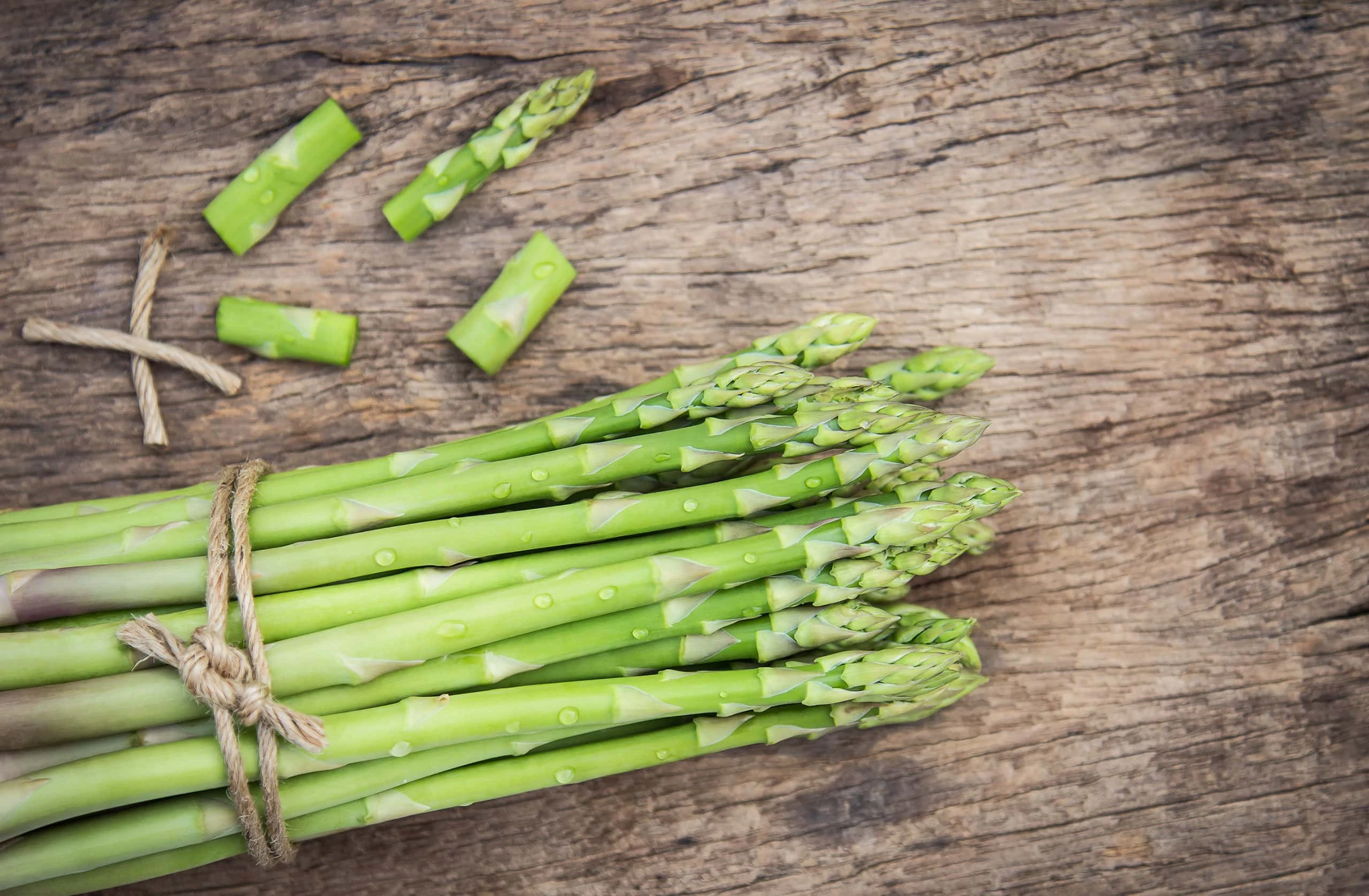
How to cook Asparagus
Equipment
- frying pan or skillet
Ingredients
- 1 teaspoon olive oil
- 12 spears asparagus
- 1/2 teaspoon salt
Instructions
Prep the Asparagus
- Wash and dry the asparagus spears
- Remove bottoms of stems
Sauté the Asparagus
- Heat the skillet to medium heat
- Add spears to pan
- Lightly drizzle olive oil over Asparagus spears and shake the pan a few times so they are evenly coated with oil
- Sprinkle salt over Asparagus for taste
- Continue heating Asparagus and every 2-3 minutes give the pan a shake until spears have browned on all sides
- Serve hot
Optional
- Add a squeeze of lemon to the pan in the last 30 seconds of cooking to add a fresh citrus taste

